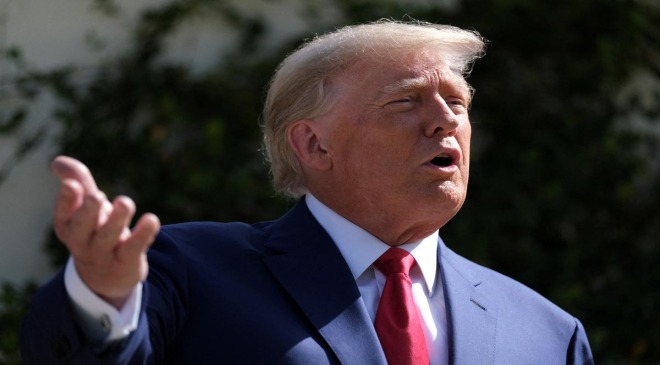The 2017 Tax Cuts and Jobs Act implemented by the Trump administration resulted in slashing the corporate tax rate by 14%, cutting individual income tax rates and increasing the standard deduction.
“Many of the household tax reforms included in the bill expire in 2025,” wrote William G. Gale of The Brookings Institution, “meaning that whoever wins the election will have the opportunity to either fight to extend the legislation or let it lapse.”
Also Read- Trump’s Supreme Court appointees have again sided with liberals
Wealthy corporations and individuals lauded this tax overhaul. But what would a Trump win in the upcoming presidential election mean for the tax burden on the poor? It may depend who you ask. According to Stan V. Smith, economist and adjunct professor at The University of Chicago, “it would go down or remain unchanged.”
Why exactly is that?
In all likelihood, Trump would extend the 2017 legislation. And “under Republican administrations in general, tax collections go up as rates get cut,” stated Smith — meaning that as taxes are reduced, the top 1% pay more in taxes.
Read More:- Silver’s model predicts win for Trump in 2024 presidential election
How does that make sense?
Smith explained that most people would be surprised to learn that the upper 1% is responsible for paying more than 50% of total taxes. “The common person doesn’t understand how huge the tax burden is on the top 1% so they look for ways to avoid it. When you reduce [the tax rate], the top 1% evades less and pays more.” This counterintuitive phenomenon was best explained by Smith’s thesis advisor at The University of Chicago, Arthur Laffer, who introduced the Laffer Curve demonstrating that cutting taxes paradoxically results in increased tax revenue.
Does the data always support this?
Well, it could. But it may not. The Laffer Curve is best regarded as a theoretical jumping off point and not a definitive hypothesis. In a document posted by the Mississippi Institutions of Higher Learning, even Laffer maintained that “what happens to revenues as a result of a tax rate change depends on a number of factors, such as “the tax system in place, the time period being considered, the ease of movement into underground activities, the level of tax rates already in place, and the prevalence of legal and accounting-driven loopholes.”
Still, “the poor pay almost no taxes,” stated Smith. “Where poor people pay the most taxes are real estate and sales tax and that’s unfortunate because you can’t change sales tax.” But, according to Smith, the 2017 tax cuts that primarily benefit the top 1% would not shift the burden to the poor.
Read More:- Presidential candidate gets a huge boost in crucial swing state poll
What about residual effects?
Some might argue that the effects on the poor are more residual in nature, and that tax cuts for the wealthy could eliminate funding for government services like Social Security and Medicaid that lower income brackets depend on. But, according to Smith’s above assessment, this logic could be false. If more money is collected from the top 1% as the result of tax cuts, then the funding would be there. Conservative justification for cutting government programs merely becomes a way to pander to a Republican base who dislike entitlement programs favored by Democrats. But would the reality of losing these programs become any less real? Trump did try to repeal and then subsequently sabotage the Affordable Care Act.
Do others agree?
While Smith’s assessment may have been supported by others up until now, some disagree on future projections in the event of a Trump win.
According to a new analysis published in May of 2024 from economists Kimberly Clausing and Mary E. Lovely of the Peterson Institute for International Economics, there’s an additional element — Trump’s newly proposed tariffs (i.e. import taxes) — that “would hurt low-income Americans the most.” Trump has recently proposed a 10% universal tariff on goods imported from every country and at least a 60% tariff on all goods made in China. And, based on research regarding 2018 imports, previously imposed tariffs were not “paid for” by other countries; U.S. consumers were just stuck with higher prices.
Because lower income Americans spend a larger percentage of their income, “the tariffs would reduce after-tax incomes by 3.5% for those in the bottom half of the income distribution and cost a typical household in the middle of the income distribution about $1700 per year,” wrote Clausing and Lovely. The upper 1%, however, would see a 1.4% increase in after-tax income.
Read More:- Donald Trump’s Chances of Beating Biden In Pennsylvania, According to Polls
In this model, the newly proposed tariffs would therefore offset the poor’s marginally raised income from any extension of the 2017 tax cuts, “shifting tax burdens away from the well-off and toward lower income members of society,” wrote Clausing and Lovely.

























